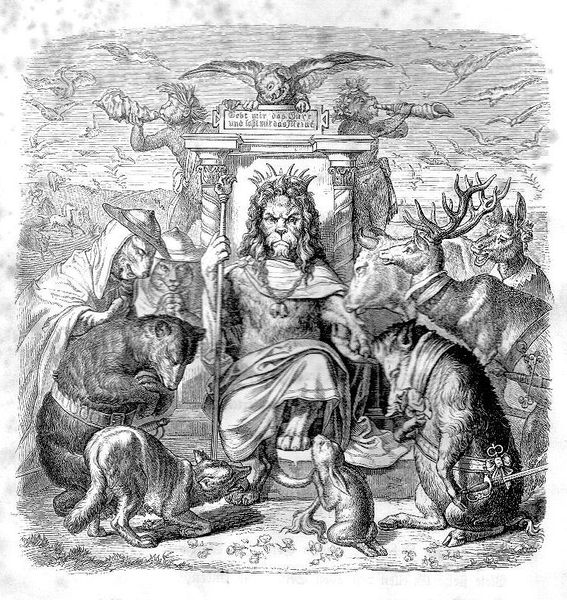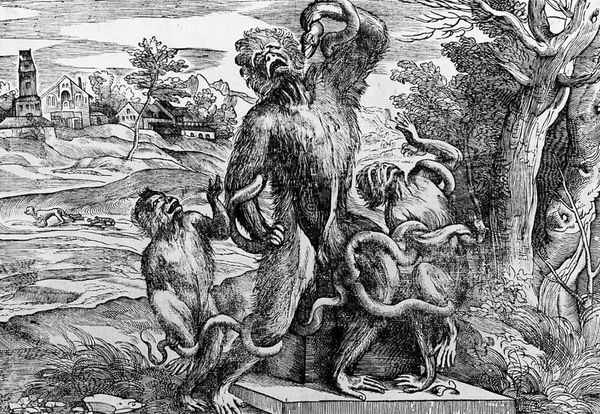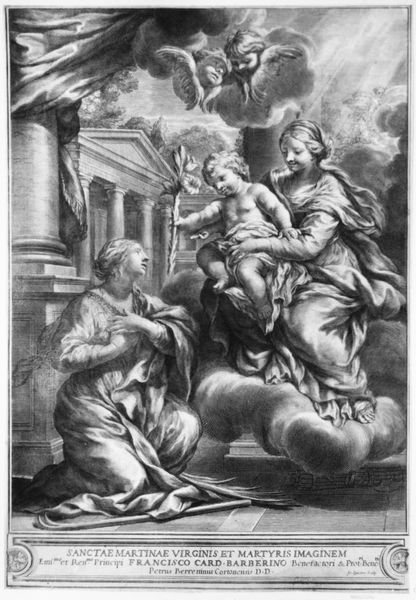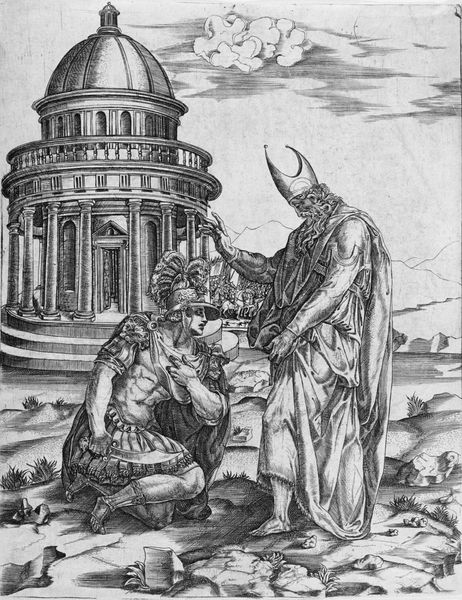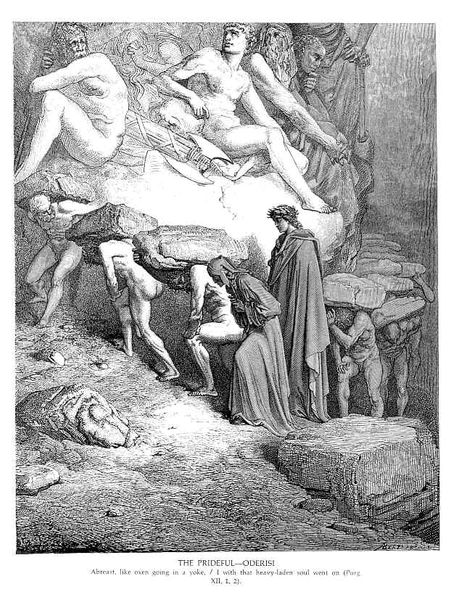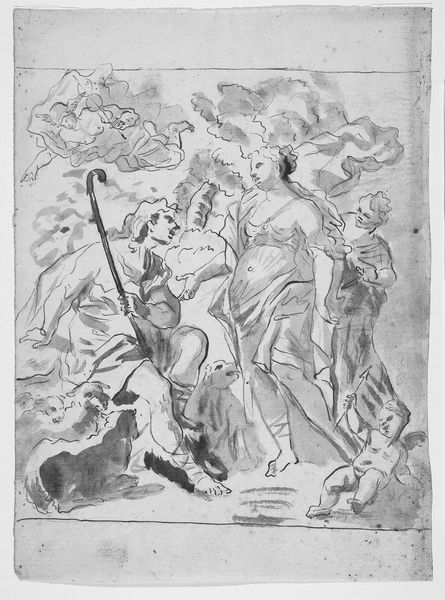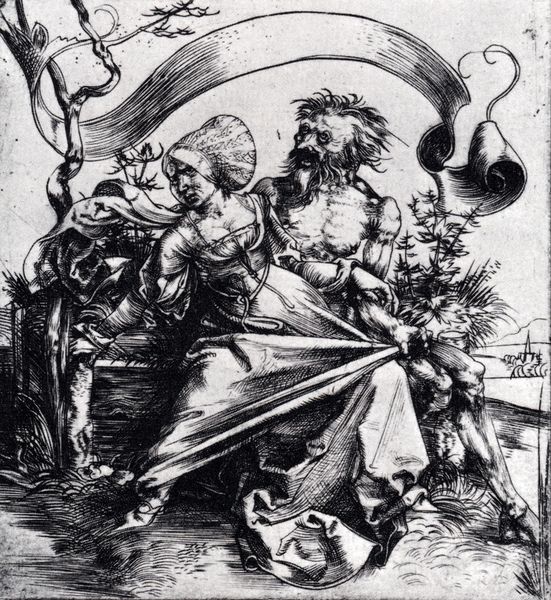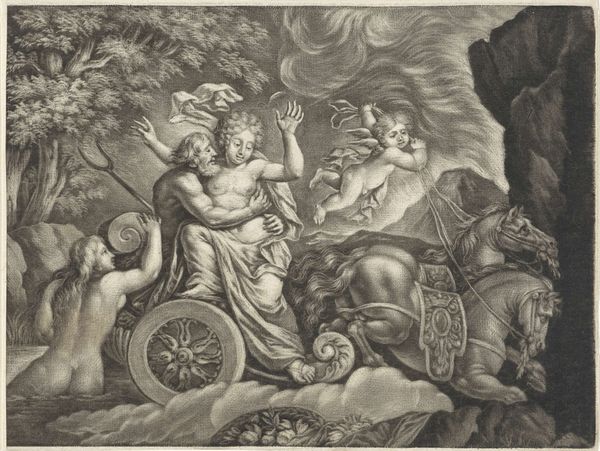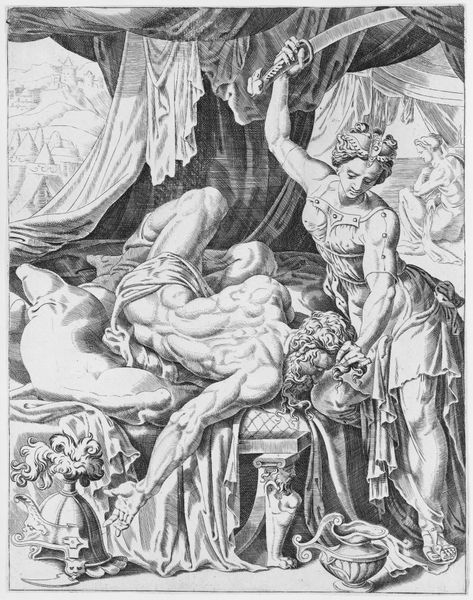
print, engraving
#
fairy-painting
#
allegory
#
narrative-art
# print
#
figuration
#
romanticism
#
engraving
Copyright: Public domain
Curator: Here we have Wilhelm von Kaulbach’s “Reineke Fuchs,” an engraving created in 1846. It’s an incredible example of narrative art from the Romantic era. Editor: My first impression is how intensely detailed and symbolic it is. The sheer number of animals, all posed so deliberately, gives it an allegorical weight. It feels like a political cartoon rendered in meticulous detail. Curator: Precisely! Kaulbach draws from the medieval allegorical folk tale, "Reynard the Fox," a satirical commentary on courtly life and social hierarchies. Each animal embodies a different type of character found in the ruling classes. Editor: So, this isn't just a whimsical depiction of animals, it's a pointed critique. Look at the lion on the throne; that’s the King, right? A figure of power, surrounded by these, well, frankly, rather shifty-looking courtiers. The rabbit trembling at his feet underscores that power dynamic and speaks volumes. Curator: Absolutely. And the figures perched atop the lion's throne— the owl and those mischievous monkey-like creatures. The owl, often a symbol of wisdom, appears here almost as a jester or a mere ornament. The print uses a traditional animal fable motif to lambast the lack of true wisdom within those governing bodies. Editor: I appreciate how Kaulbach uses Romanticism not just for aesthetic beauty, but for a forceful message. The stark black and white engraving heightens the sense of drama. I think that, even now, this kind of allegorical narrative encourages reflection about our contemporary socio-political structure. How much has changed, really? Who are the foxes and the lions now? Curator: Indeed. By connecting a well-known folk tale with recognizable animal symbolism, Kaulbach’s work speaks to the enduring nature of power struggles and the critique of authority. This print made Kaulbach an instant success. Its sharp political edge spoke clearly to his time. Editor: "Reineke Fuchs," then, isn't merely a pretty print; it's an invitation to dissect the roles and behaviors we see enacted around us, yesterday and today. Thanks for pointing out the fascinating social critique. Curator: My pleasure! I hope the listen has gleaned the deep historical roots of Kaulbach’s allegory and will consider its place in the social movements of that era.
Comments
No comments
Be the first to comment and join the conversation on the ultimate creative platform.
